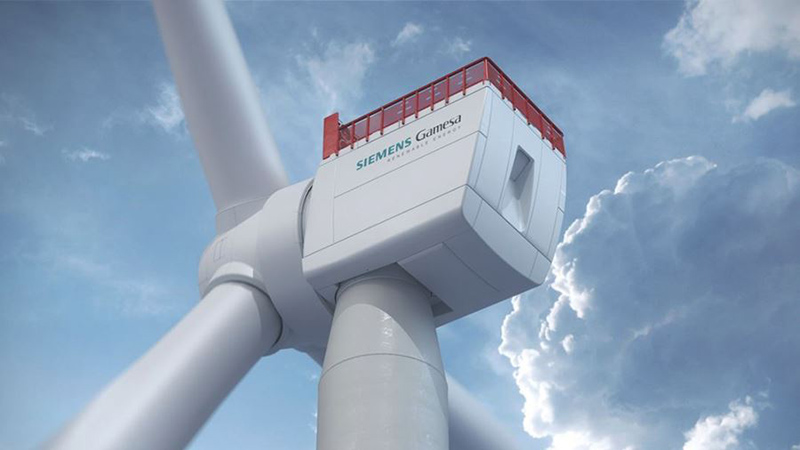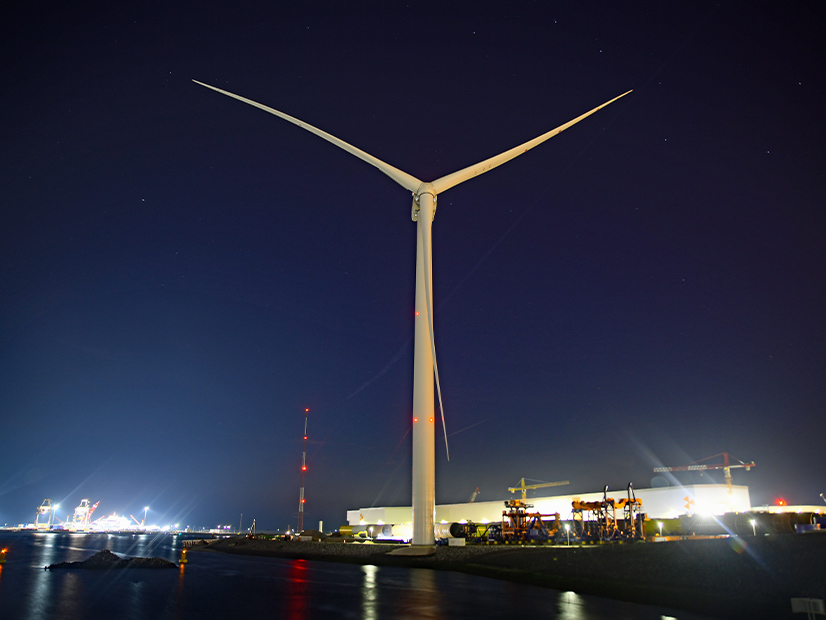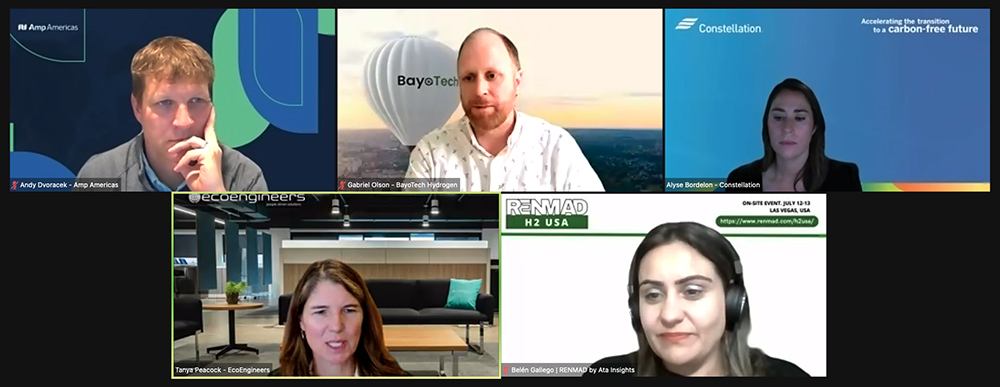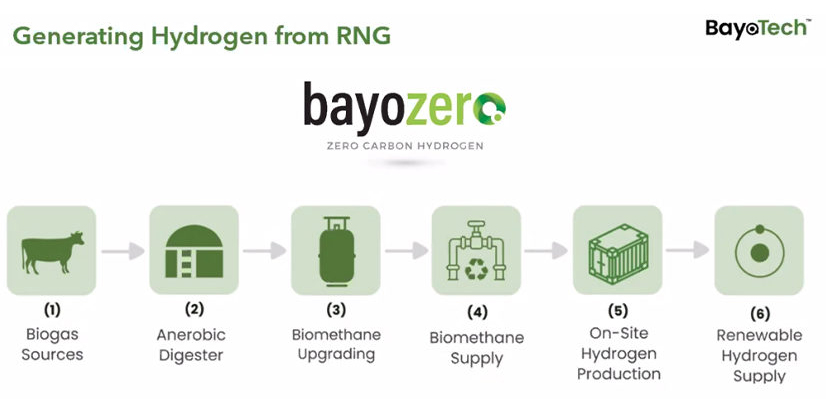Two recent reports quantify the rapid growth of the U.S. offshore wind sector, while a third flags technical and reliability challenges posed by the ever-larger scale of turbines being installed.
There are just seven turbines spinning in U.S. waters, but thousands more are being planned. The American Clean Power Association’s (ACP) May 2023 Offshore Wind Market Report puts the U.S. development pipeline at nearly 51,400 MW, while the Business Network for Offshore Wind’s (BNOW) first-quarter report puts the combined goals of oceanfront states at 83,900 MW.

Meanwhile, GCube Insurance in its second-quarter report this month warned that the latest-model high-capacity wind turbines favored by many developers are showing an unprecedented number of component failures, mechanical breakdowns and serial defects.
And the National Offshore Wind Research and Development Consortium in an April update of its road map points out a shortage of operational experience and data that could guide development of the large turbines planned for U.S. waters.
The potential consequences of this concurrent push for size and speed are that standardized, modular construction and the resulting economies of scale become hard to achieve and that quality control suffers.
This has been flagged many times by stakeholders, analysts and manufacturers. But taken together, the spate of recent reports provides a new look at the issue with fresh data.
Big Plans
The U.S. is very late to the offshore wind sector.
Thirty-two years after the first offshore wind farm went online in Denmark with a 5-MW capacity rating, worldwide installed capacity is 63,200 MW, with just 42 MW of it in U.S. waters. But the country is trying to make up for lost time to reduce greenhouse gas emissions and limit harm to the environment. President Joe Biden has set a national goal of 30 GW of offshore wind capacity installed by 2030 and 15 GW of floating offshore wind by 2035.
Major logistical hurdles stand in the way of the first goal: Domestic infrastructure and capacity to fabricate and install 2,000 fixed-bottom wind turbines are virtually nonexistent, and today’s grid cannot carry all those electrons.
But U.S. developers and regulators can at least draw on the body of knowledge gained from the 63 GW of fixed-bottom wind power in foreign waters. There is no such operational history with floating wind.
ACP’s report notes there are now 32 offshore wind leases in active development nationwide, with 18 projects in early development and 18 in advanced development. They total 51,377 MW of nameplate capacity, 938 MW of which is now under construction.
Most of this is on the East Coast: New York and New Jersey lead the nation with 4,362 MW and 3,758 MW in their pipelines, respectively.
In its report, BNOW notes that numerous infrastructure upgrades and manufacturing expansions are being undertaken to help make all the megawatts envisioned a reality. It also notes that the federal government this year moved to streamline the yearslong review process for development.
So far, the only records of decision issued by the U.S. Bureau of Ocean Energy Management have been for the two projects totaling 938 MW now under construction: Vineyard Wind 1 and South Fork Wind off the New York/New England coast, which are both expected to come online this year.
Big Turbines
In this environment, and with costs spiraling, developers and manufacturers are trying to squeeze as many watts as possible out of each turbine to maximize return on investment.
One notable example: Avangrid in September said it was pushing the completion dates of its Park City Wind and Commonwealth Wind projects back one year to 2027 and 2028, respectively, in hopes that next-generation 17- to 20-MW turbines would be available in time. It said the cutting-edge turbines it would be installing in Vineyard Wind 1 in 2023 can produce only 13 MW.
Some observers warn that this continual upscaling creates the risk that nothing ever really moves beyond the prototype stage; designs would be continuously being tweaked, upgraded and replaced.
GCube in its report said the largest turbines in production five years ago were rated at 8 MW.

Now, the major Western manufacturers — General Electric, Siemens Gamesa and Vestas — are all sniffing around 15 MW with their largest prototypes. In China, China Three Gorges and Goldwind have produced a 16-MW unit, and CSSC Haizhuang laid claim to the world record with an 18-MW monster whose rotor sweep spans 13 acres.
Fresh off December certification of its Haliade-X turbine for 14.7-MW operation, a GE executive told investors in March the company is preparing a variant that will produce 17 to 18 MW.
The GCube report — titled “Vertical Limit: When is Bigger not Better in Offshore Wind’s Race to Scale?” — asserts that while this relentless upsizing has sharply reduced the cost of wind power and sharply increased the amount of power produced, there are negative consequences:
- manufacturers competing for market share sign contracts for next-generation equipment years before it goes into production, sometimes without fully understanding the necessary processes and pricing;
- with ever-evolving technology, every project can have its own unique learning curve;
- turbines are becoming obsolete only a few years into a projected 25- to 30-year lifespan, and replacement parts are sometimes unavailable;
- maintenance and repairs are incrementally more difficult, costly and time consuming as machines get larger;
- support infrastructure has trouble keeping up — only three vessels in the world can install the newest 15-MW turbines; they cost up to $2 million a day to charter; and they are booked for years to come; and
- insurance claims are escalating, but insurers, eager to burnish their environmental, social and corporate governance credentials (ESG), continue to enter the offshore wind market.
GCube, which insures 100 GW of renewable energy projects in 40 countries, analyzed a decade of proprietary data and determined that offshore wind claims increased significantly in frequency and severity over the decade from 2012 to 2021, with turbine component failures increasing sharply after 2017.
It also found that as a proportion of total claims, larger turbines are generating more claims during construction than their smaller, older cousins did. Then, once installed, turbines larger than 8 MW are sustaining component failures much sooner than smaller units.
In a May 2 announcement, GCube CEO Fraser McLachlan presented the study and its data as a cautionary tale.
“The push to rapidly develop more powerful machines is piling pressure on manufacturers, the supply chain and the insurance market,” he said. “Scaling up is an essential part of driving forward the energy transition, but it is now creating growing financial risks that pose a fundamental threat to the sector. We advise manufacturers to focus on improving the quality and reliability of a reduced number of products to put themselves back on a sustainable path of development.
“At the same time, developers must support manufacturers by sharing the risk of larger machines more equitably and open their lending books to supply chain companies.”
Recurring Message
The GCube report’s warning of too much, too fast is a message expressed in different ways for different reasons by both opponents and proponents of offshore wind.
In an email to NetZero Insider, BNOW wrote of the climate and economic benefits of this rapid technological evolution but also flagged some concerns.
“The scale and speed of the technological advancement, however, is challenging for the supply chain to keep pace, let alone expand to meet rising demand,” the organization wrote. “Standardization and optimization are keys to creating more supply chain capacity, ensuring deployment goals are met and even further driving down costs, but those benefits must be weighed against fostering innovation in this still evolving industry.”
The National Renewable Energy Lab told NetZero Insider there would be greater value in industrializing at the current scale than in upscaling beyond 15 MW. NREL in its January offshore wind supply chain road map said it expected some modularity to evolve in design and construction of turbine nacelles. But it also saw the potential upscaling of nacelles from 600 tons to nearly 1,000 tons.
The R&D Consortium in Version 4.0 of its road map last month said operations and maintenance costs constitute more than 30% of the cost of offshore wind, and it is imperative to control those costs at the design stage.
However, it noted, there are few test facilities that can accommodate components on the 15-MW scale and no record of operations data from which to draw insight, as 15-MW turbines are so new.
“The offshore wind industry has been focused on turbine megawatt upscaling, but optimization of the current generation of 15-MW turbines for performance and load reduction has been compromised as a result,” the report noted. “The consortium does not envision direct support of new turbine development. Rather, acceleration of turbine optimization solutions in harmony with the needed industrialization and standardization of the supply chain would better serve U.S. development.”
It is likely, the consortium added, that maintenance systems and protocols for 15-MW turbines will be developed and proved in U.S. waters.
Quality Control
One after another in the past year, the major turbine manufacturers have acknowledged sharply escalating quality-control problems and warranty claims in their wind power products. To judge by their statements to investors and analysts, they have already embraced some of the points in the GCube report.

In an October 2022 earnings call, GE CEO H. Lawrence Culp Jr. spoke of the warranty costs that were a drag on the financials of GE Renewables and blamed some of that on rapid product development over the preceding five years.
“Such rapid innovation strains manufacturing and the broader supply chain,” he said. “It takes time to stabilize production and quality on these new products, which in turn pressures fleet availability. We need to industrialize faster to counteract these dynamics, and we are.
“We’re drastically simplifying and standardizing too many variants into what we call workhorse products, so we and our suppliers can implement more repeatable manufacturing processes. This enhances product quality and reduces cost. In our existing fleet, we’re deploying corrective measures, enhancements and monitor-and-repair programs.”
Vestas reported in February that lost production factor — the measure of energy production not captured by the 56,400 wind turbines under its service — has been rising steadily for several years, surpassing 3% by the end of 2022. Warranty costs equaled 6.3% of Vestas’ 2022 revenue.
“Lost production factor continues at high level as a consequence of the extraordinary repair and upgrade level,” it said in a quarterly report May 10, but the numbers were better: Warranty costs equaled only 4% of first-quarter revenue, compared with 7.8% in the first quarter of 2022.
“Optimizing the complete value chain calls for increased focus on improving our existing platforms,” Vestas said in its annual report. “We believe strongly in this approach, because introducing new platforms too fast obstructs supply chain industrialization. As turbine components become larger and more efficient, they also create logistical challenges to the expansion of wind power around the world. For this reason, we are paving the way for scale through modularization and optimizing how our products are designed and produced.”
And in a quarterly report to investors in February, Siemens Gamesa wrote, “Service performance during Q1 [2023] was severely affected by the outcome of the periodic monitoring and technical failure assessment of the installed fleet, which revealed a negative trend in the failure rate of certain components. As a result, the estimated cost of fleet maintenance and warranty provisions is higher than initially estimated.”


